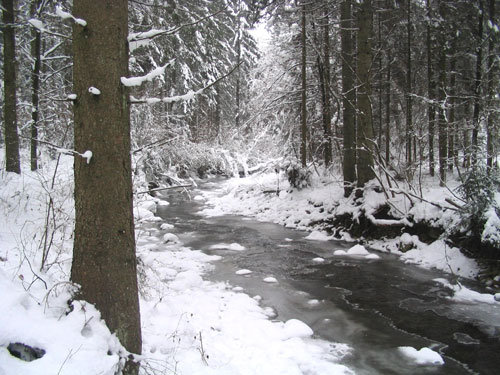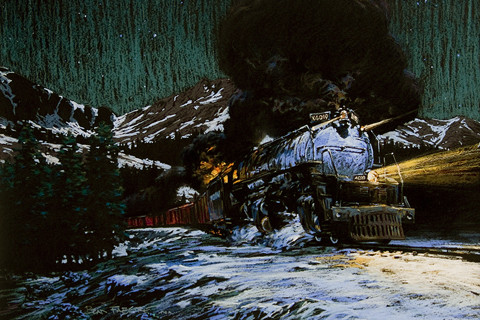Trying to channel Thoreau along this remote forest path, I whispered softly, "I went to the woods because I wished to live deliberately, to front only the essential facts of life, and see if I could not learn what it had to teach, and not, when I came to die, discover that I had not lived..."
Sounding silly I marched deeper along the Natchez Trace with my copy of Walden, seeking solitude and elusive peace to quiet the spirit of a suburban dad. How different this world is from incessant SmartPhone messages, Facebook updates, and media saturation; a constant "noise" flooding our lives with satellite, cell phone, radio waves -- audible and otherwise.
I heard a subtle patter accompany my stroll, lightly tapping the dead leaves that lined my path. What invisible creatures could make such sounds? Is the speed or force of my gate causing this phantom rustle?
As I bent down to investigate, I found a forgotten reality -- a place rarely visited by distracted people like me; a place I often spent hours as a child, but only moments in the last decade. I saw spiders -- hundreds of those "grand-daddy long legs" scurrying with fantastic agility along the ridges and gullies of an infinite leaf-scape.
Moving like creatures from some Tim Burton film, each step tapping out a slight sound of light drizzle, these marvelous spiders were my sojourners along the path. Where were they going in their daily commute? Afraid of the bipod giant in khaki cargo shorts?
And so my thoughts reflected on a recent conversation on the "Philosophy of Mind", a discipline devoted to issues such as how the brain interacts with the mind, whether thoughts are just mental constructs of the physical brain, theoretically measurable in chemical formulas, and so on. If the mind is indeed a separate entity of the brain, then do apes have minds? Do dogs and cats? Do spiders? And if so, what do they think about?
I found a small patch of moss growing thick and soft, sending fragile 3-inch shoots of yellow buds toward the canopy of life far above, yearning for a little more love from the sun. Deep in this micro-forest of moss, five or six ants investigated their surroundings as I did mine.
My prodding finger softly depressed a spot on the small mossy hills, and I was suddenly discovered. One of the ants became keenly aware of my presence and began making its way toward my finger. When I withdrew, the excited little arthropod made a rush for my feet.
Would this ant defend its family, its forest, its honor in the face of certain death at the hands (or shoes) of a giant? Yes -- it would.
Although I declined his offer to wrestle and made my retreat with haste, I began to wonder -- does this ant have a mind? Perhaps not one to contemplate astrophysics or Marxism or the World Cup... but perhaps duty and architecture and a sense of sacrifice; how noble are these smallest of creatures.
"Shams and delusions are esteemed for soundest truths, while reality is fabulous.... When we are unhurried and wise, we perceive that only great and worthy things have any permanent and absolute existence, that petty fears and petty pleasures are but the shadow of reality." - Thoreau, Walden
My two hours in the woods left me wanting. I enjoyed a brief respite from the pressures and distractions of Thoreau's "shadow of reality" and realized I need more time for botany, for breathing, for vainly considering the life of an ant and the lilies of the field as a worthy exercise in itself.




